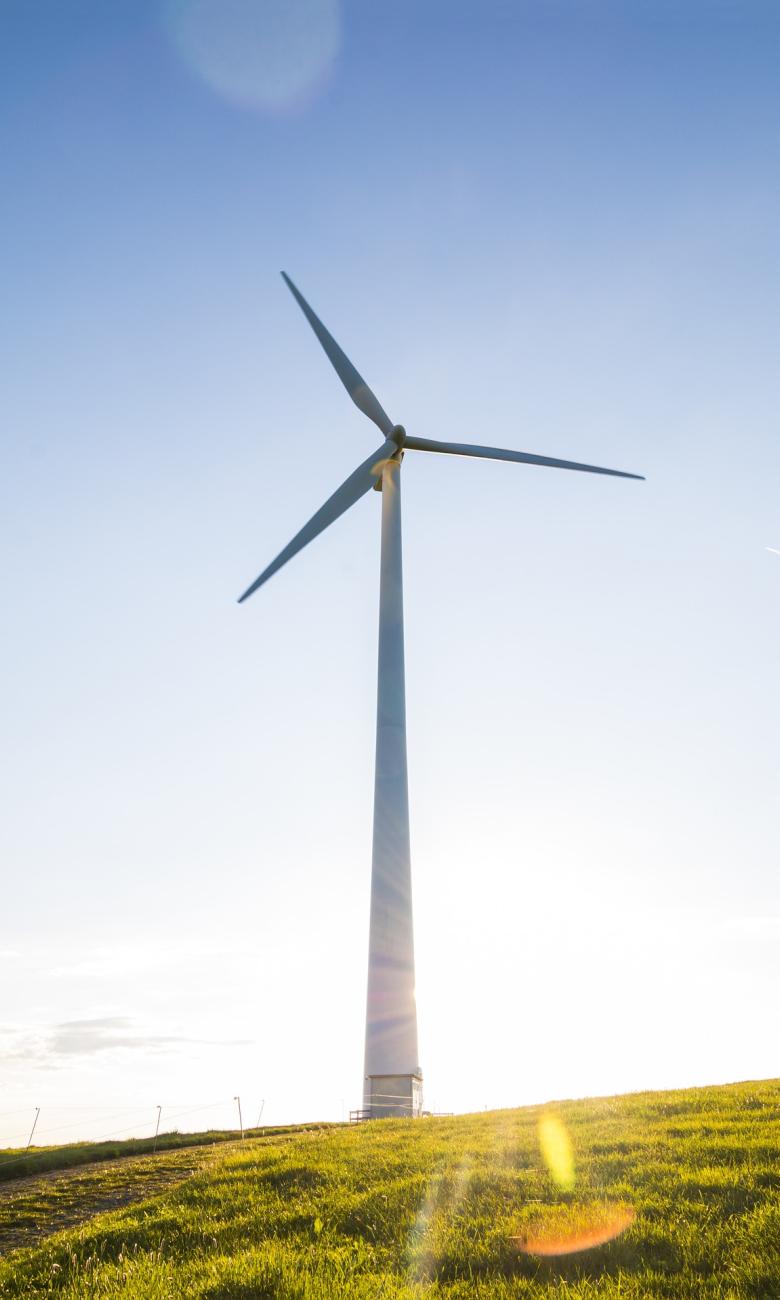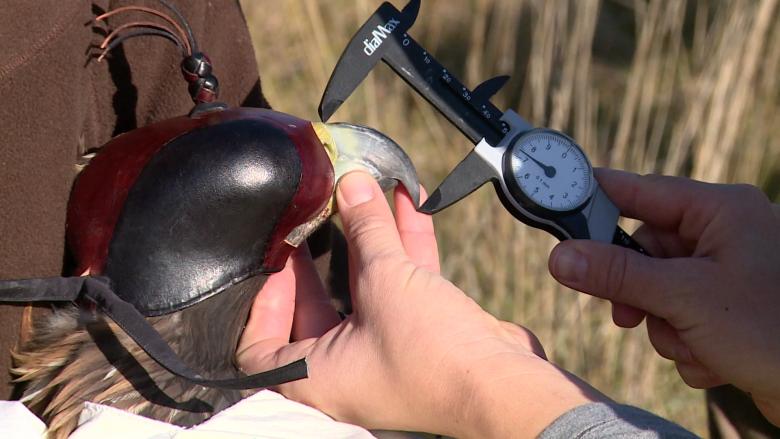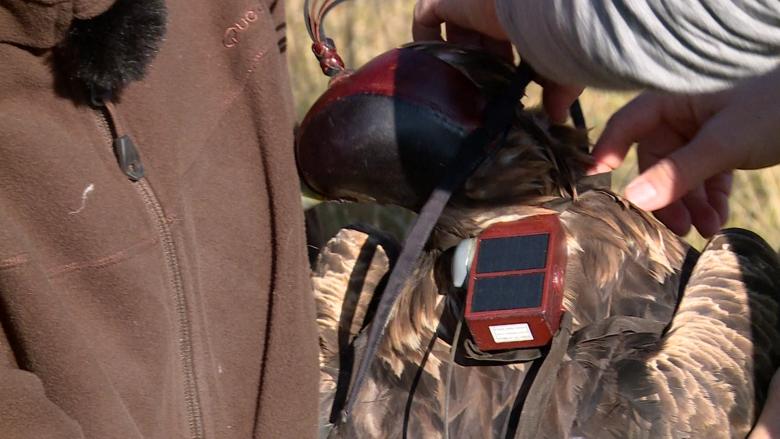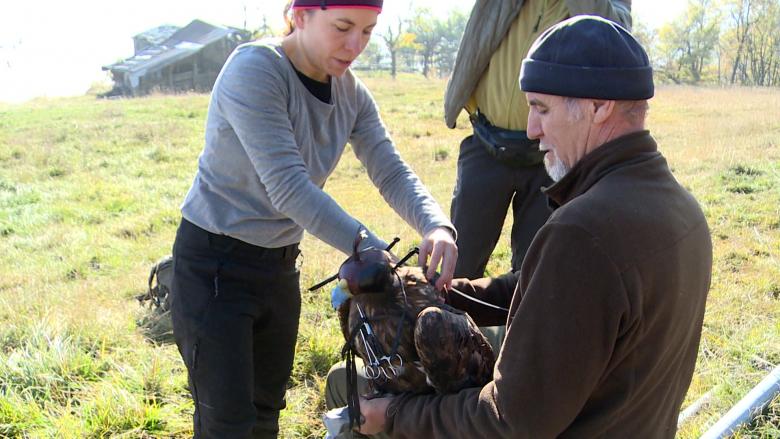Setting up wind turbines with the help of eagles
Thanks to biologists from the University of Bern, golden eagles are becoming invaluable co-workers in the development of wind farms in the Swiss Alps. The large birds are equipped with GPS tags to transmit data that can limit their risk of colliding with the future turbines.
The aim of the university's project on birds of prey and wind turbines is to draw up a map of the Alps detailing the places where the eagles go – in order to protect them. The project team is headed by Raphaël Arlettaz, the director of the biology department, who is a biologist from the Valais. This approach – combining the principles of a sustainable economy and respect for the environment – is particularly close to his heart. "In order to protect our climate, we have to transition to an economy based on renewable resources. Unfortunately, some green energy production methods such as wind power pose a serious threat to biodiversity. Birds and bats, for example, get trapped easily in the blades of turbines," Arlettaz says. In Switzerland, two species are being monitored closely in particular – the bearded vulture and the golden eagle. This is because of their low reproductive rates and population densities. Both species are endangered and therefore protected. "The latest data show that there are 21 nesting pairs of bearded vultures and approximately 350 pairs of golden eagles in Switzerland. Any new potential causes of death in the Alps could have dramatic repercussions for the future of their species' populations," notes Arlettaz, who has personally committed himself to saving the largest Alpine bird of prey – the bearded vulture. "In 1991, Switzerland launched a programme to reintroduce bearded vultures. It has proved to be one of humankind's greatest global successes in recovering a species by sheer will. It would be a disaster if green energies were to herald the death of these magnificent birds in our mountains, especially as they play such a vital role as nature's sanitation experts. "

A Swiss first
Arlettaz's passion for birds and his concern for biodiversity loss prompted him and his team to develop a project to model topographic conditions in the Alps where there is a high risk of birds colliding with wind turbines. "If we avoid setting up turbines in these areas, we may be able to limit the potentially fatal impact of these new Alpine installations. A lot of bearded vultures have been given satellite and GPS tags in the past few years, so we already have detailed data on them. But we don't have anything comparable for the golden eagle species in Switzerland." Protected birds of prey have been equipped with GPS tags since 2018, which means that researchers can now analyse their every move.
Data is collected in Valais and neighbouring regions using two techniques. The first uses high-performance binoculars to locate objects in a three-dimensional space, a method that was used in the canton of Valais between April 2018 and July 2019. "The binoculars allow you to pinpoint the eagle overhead and get its precise coordinates, i.e. the latitude, longitude and altitude," explains Arlettaz. The second method, which has been used since November 2018, consists of capturing immature and adult eagles in their natural environment and equipping them with GPS tags. "This was the first time it was done in Switzerland. Peter Bloom, a specialist in golden eagles from North America, spent three weeks in Valais and gave us a lot of valuable advice. To capture the birds we use remote-controlled trap nets that can be triggered remotely (up to three kilometres) using a camera. Thanks to Peter's invaluable expertise, were learned how to carry out these operations without injuring any birds."

Target of twenty birds
The operations to capture the birds are carried out by two field technicians and last about one week on average. "Because we know the eagles and their territory, we also know the areas where we are most likely to find them," explains Arlettaz. Two to three traps with cameras placed close by are set up in the area to be monitored in order to observe the movement of the eagles. This is also done by telescope. Between November 2018 and January 2019, Arlettaz's team equipped thirteen eagles in Valais with GPS tags. "Our goal is to tag twenty," he announced. "There are sixty-eight nesting pairs of eagles in the canton. What we're most interested in is the eagles' flight distance from the ground depending on different topographical features. We're looking in particular at their approach distance to mountain passes and ridges, locations which power companies looking to set up turbines are especially interested in. We have managed to tag all the eagles in the canton, and now we are focusing on the Nufenen region, where there are already four wind turbines. This enable us to measure how the birds negotiate certain obstacles and the risk of collision in both good and foggy conditions. You need a lot of patience for these operations. Once, we went eleven days without seeing a single eagle!" says Anna Sandor, one of the project's field technicians.

Like a 3D map
A Teflon harness is used to attach the GPS tag to each eagle's back. It looks like a tiny backpack weighing just a few ounces and can be recharged using a solar collector. A bird keeps its tag for life. The data transmitted by the eagles allows researchers to create a spatial model like a 3D map. "The model takes into account conditions up to an altitude of 200 metres above ground level, which is the maximum height of a wind turbine, and maps out the areas most frequented by the birds. The idea is to ban the installation of turbines in these zones," explains Arlettaz, who expects the team to complete their mapping model for the eagle within the next three to five years, and probably even earlier for the bearded vulture.





